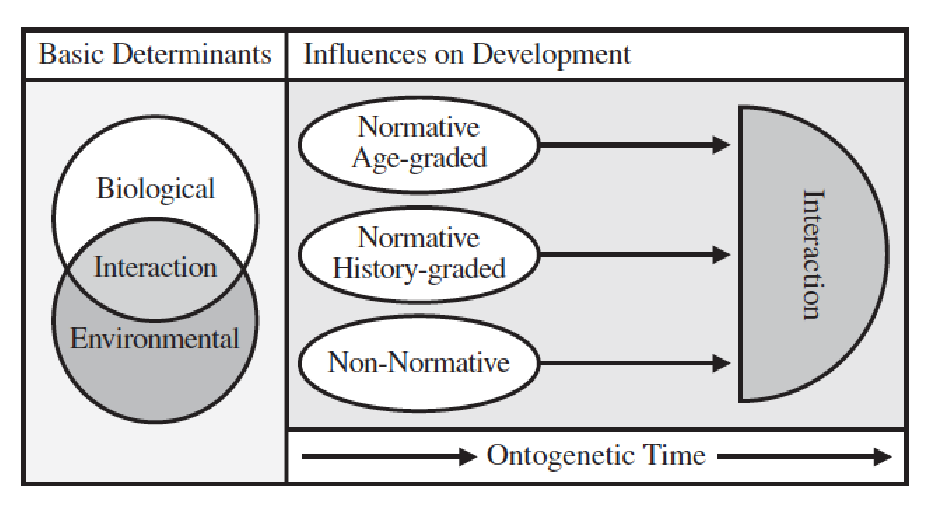Lecture 1: Introduction, methods, lifespan development
1/39
There's no tags or description
Looks like no tags are added yet.
Name | Mastery | Learn | Test | Matching | Spaced |
|---|
No study sessions yet.
40 Terms
What is Developmental Psychology?
It deals with behavioral changes within persons across the lifespan, and with differences between and similarities among persons in the nature of these changes.
What is the aim of Developmental psychology?
To describe these intraindividual changes and interindividual differences and to explain how they come about and to find ways to modify them in an optimun way.
What are the 4 areas of Developmental psychology that we look at?
Biological
Social
Emotional
Cognitive
What do you look at when studying normative development?
Linking important developmental changes to a certain age.

What are the 2 phases of Old age?
Young-old: ~60/65-80 years
Still relatively healthy
Active
Old-old: from ~80 years on
Increased risk for physical and cognitive problems
But huge differences between individuals (age not very informative).
When we research What develops When, we use Age as an indicator. But what is important to remember regarding Age?
Biological age is never responsible for and thus not explain changes.
Changes can only be correlated with age — “vehicle” of change.
What is the goal of researching What develops When?
To link changes to the “Why”: which mechanisms drive development?
What are the 2 time scales of Development?
Variability = Short-term changes that are more or less reversible.
Change = More or less enduring.
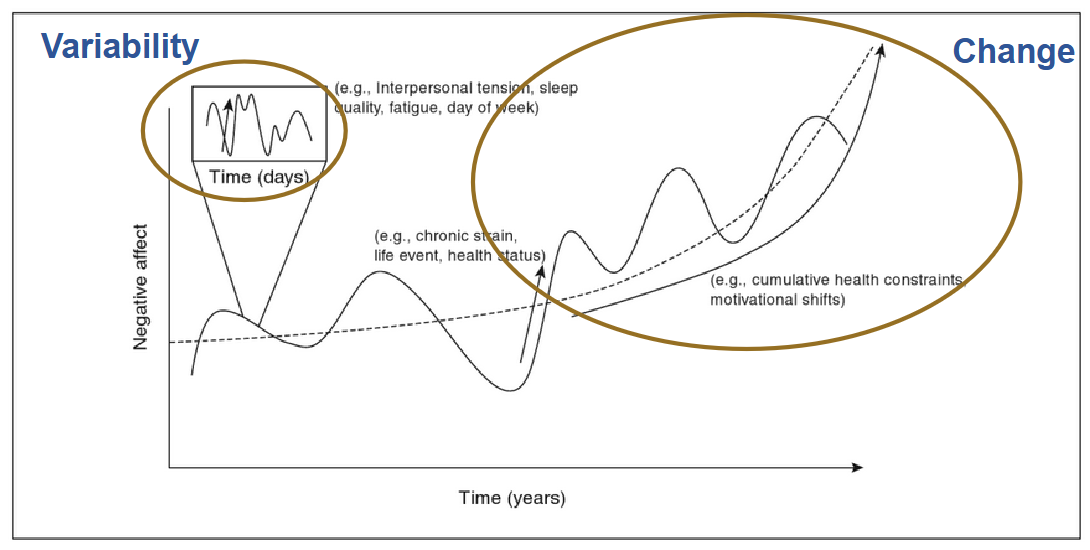
What is the relationship between Variability and Change?
Variability can predict change.
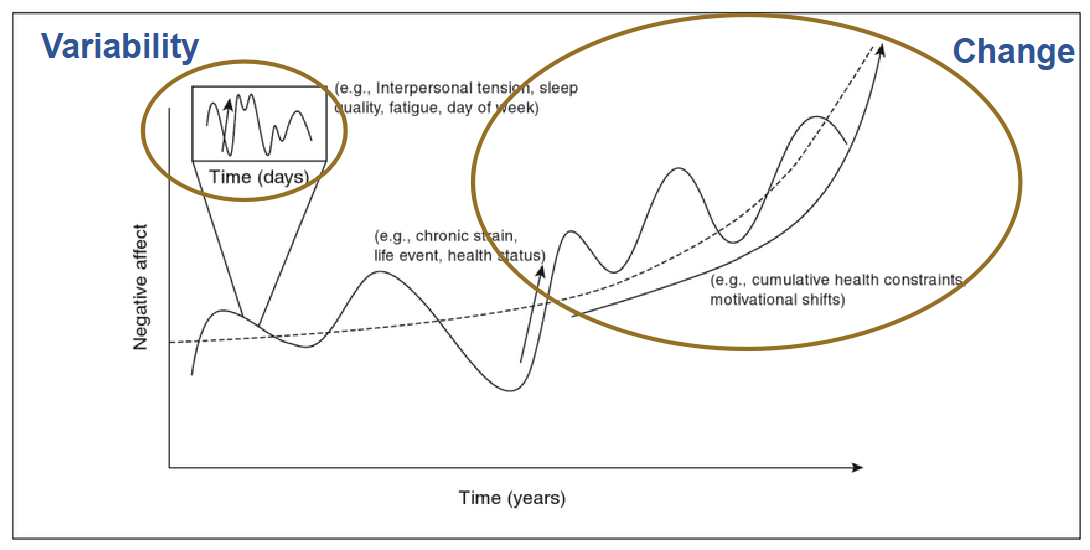
What are the 2 ways in which we can treat Age?
In a continuous way
Compare specific age groups
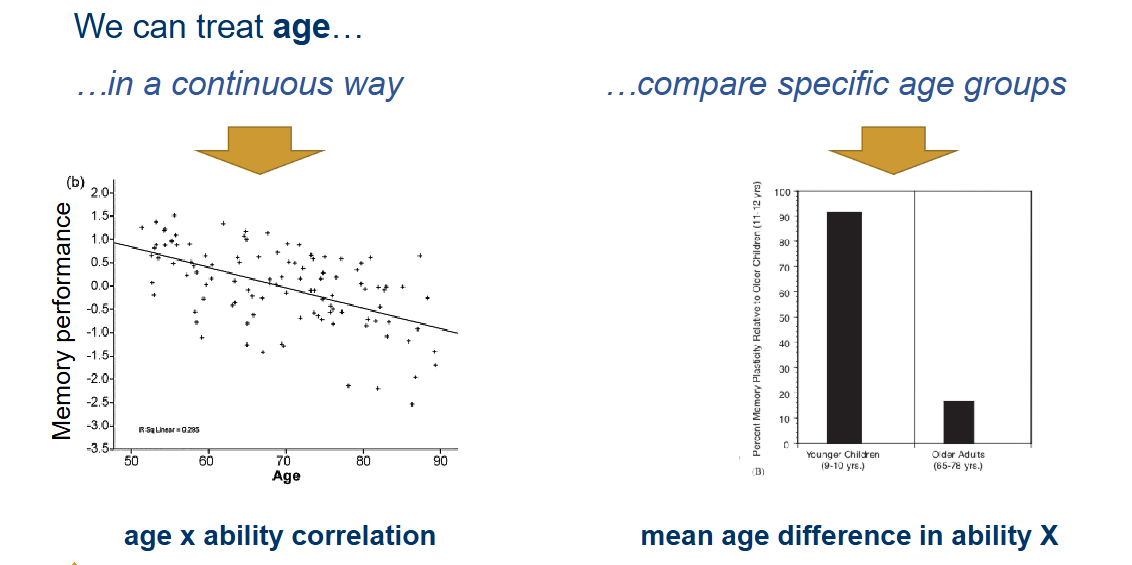
What are the 2 designs in which we can investigate the “When” in Developmental psychology?
We can investigate…
Cross-sectional designs = individuals of different ages at one point in time.
Longitudinal designs = the same individuals across different pointsin time.
What is the difference in what we measure regarding Cross-sectional and Longitudinal designs?
Cross-sectional = We measure differences.
Longitudinal = We measure change.
What is a Cross-sectional design used for?
Studying groups of individuals of different ages at one point in time.
Measure interindividual differences.
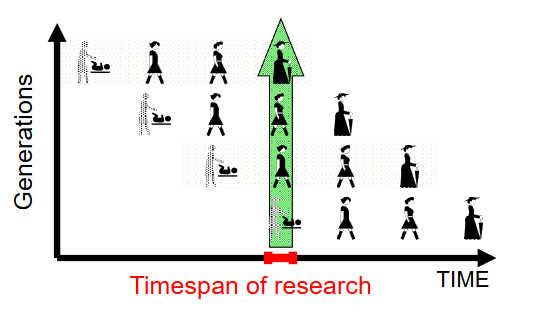
What is a Longitudinal design used for?
Studying one group of individuals over a longer time period.
Measure intraindividual change.
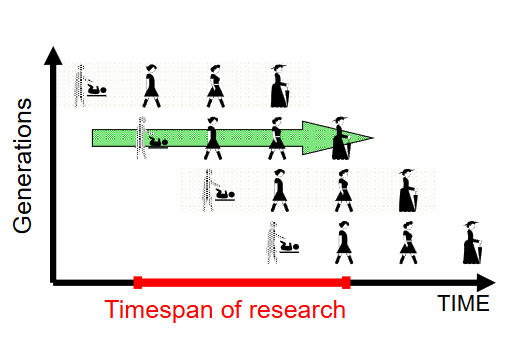
Environmental influences such as war, pandemics, crises, can influence observed results and give the impression that development takes place ALTHOUGH measures are caused by environmental conditions. What are the problems that the 2 research designs of DP can face?
Cross-sectional = Cohort effects
Longitudinal = Time-of-measurement effects
What is a Cohort?
Any group that shares having experienced the same cultural environment and historical events (e.g. same year of birth).
What are Cohort effects?
Differences in developmentally relevant variables that arise from (non-age-related) factors to which each birth cohort was exposed.
In cross-sectional designs it can happen that age effects are confounded with cohort effects. What does this mean?
Wrongly assuming age differences, when the effect was caused by cohort characteristics due to their historical context.
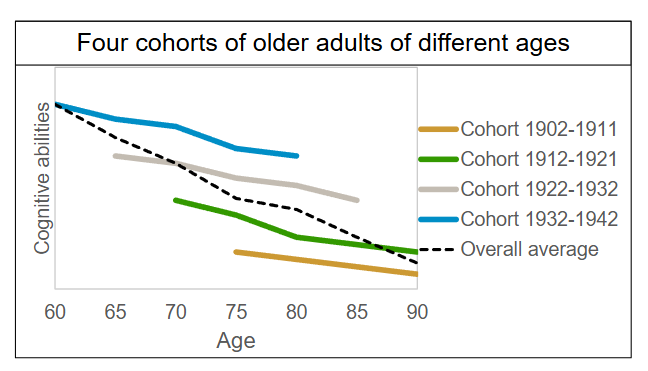
What are Time-of-measurement effects?
Effects of historical events and trends occurring when the data are being collected on observed results.
In Longitudinal studies, age effects and time-of-measurement effects are confounded. What does this mean?
Wrongly assuming change, when the effect was caused by the historical context on the times when data were collected.
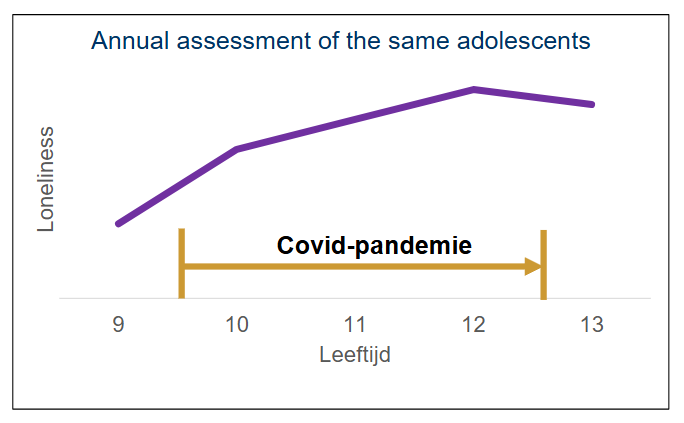
What are the 3 Advantages and 3 Disadvantages of Cross-sectional designs?
Advantages
Economic in time (short duration between assessment and results).
Rather cheap.
Shows similarities and differences between age groups.
Disadvantages
No information on individual trajectories (interindividual differences instead of intraindividual change).
Age effects confounded with cohort effects.
Limited generalizability to other times of measurement.
What are the 2 Advantages and 4 Disadvantages of Longitudinal designs?
Advantages
True assessment of intraindividual change.
Assessment of stability and change of developmental characteristics.
Disadvantages
Age effects are confounded with time-of-measurement effects / retest effects / attrition effects.
Limited generalizability to other cohorts.
Long duration.
High costs.
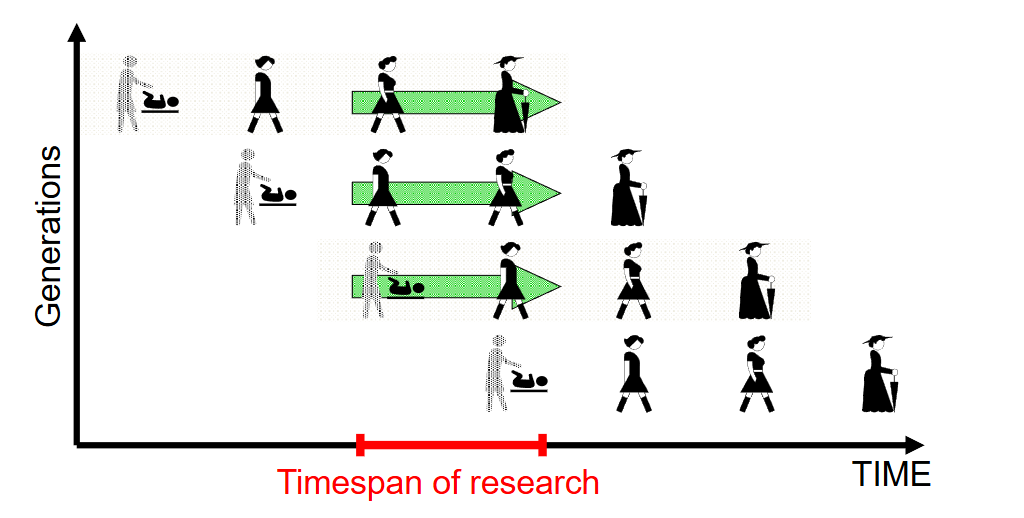
What is a Sequence model?
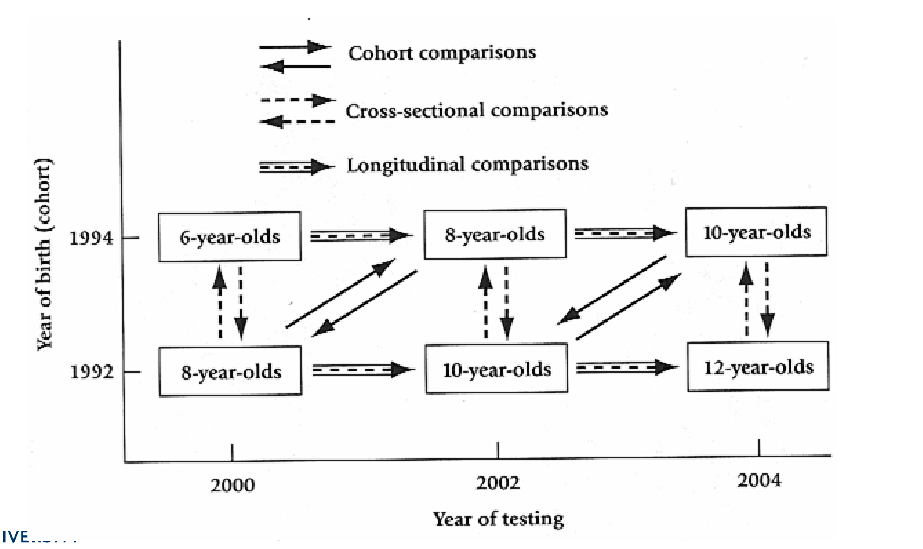
What are the 3 types of Assessment methods that we have in DP?
Self-report vs. Report by proxy (e.g. parents, spouse, caregiver).
Interview
Questionnaires
Diaries
Behavioral observation [naturalistic vs. structured]
Standardized Tests / Tests batteries [comparison to norms]
Physiology [EEG, heart rate, eye tracking, sucking duration]
What is a Case study?
You follow an individual over time.
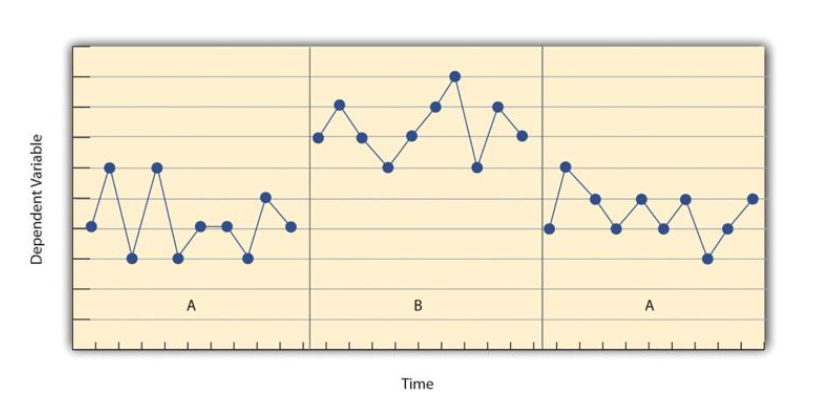
What is a Correlational design?
When you want to investigate the relationship between two (or more) variables without the researcher controlling or manipulating any of them.
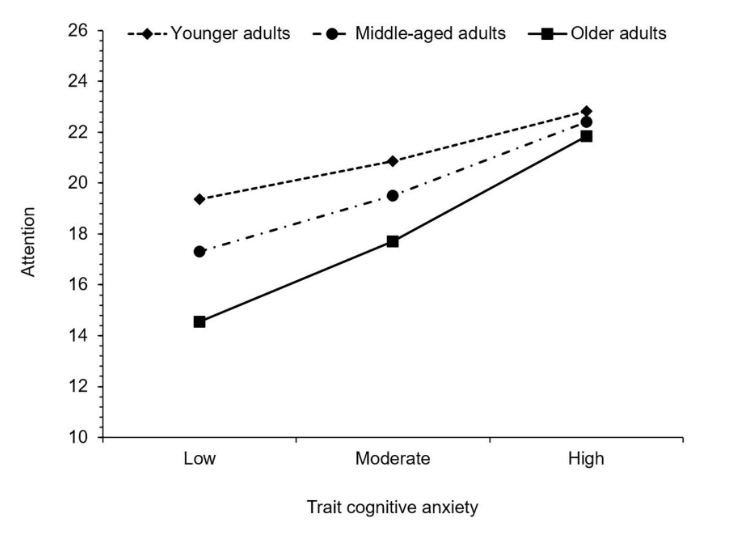
What is a Experimental design?
The process of carrying out research in an objective and controlled fashion so that precision is maximized and specific conclusions can be drawn regarding a hypothesis statement.
Generally, the purpose is to establish the effect that a factor or independent variable has on a dependent variable.
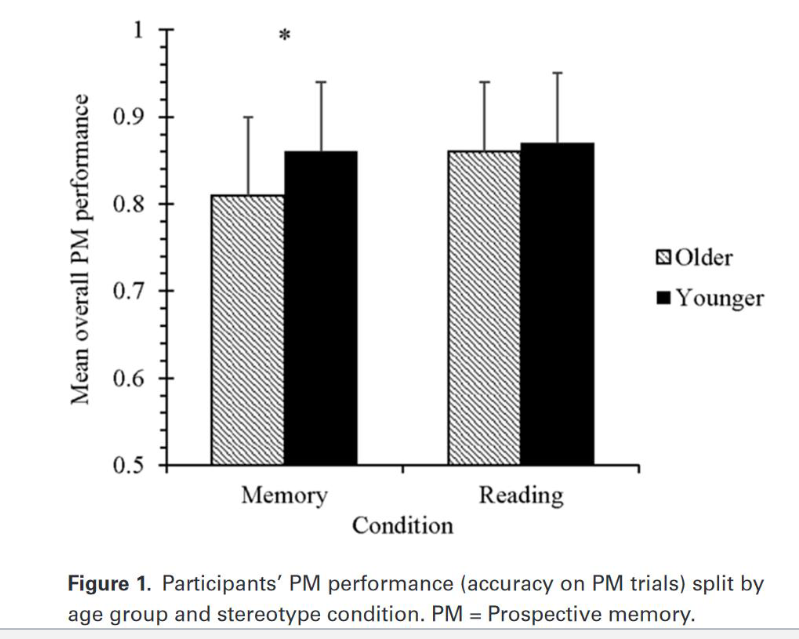
In Developmental research, we focus on age groups (infants, children, older adults) that may differ from younger adults in 6 areas; what are those?
Speech reception and production
Sensimotoric abilities
Suggestibility
Attention span / Fatigue
Subjective meaning of concepts
Proportion of undiagnosed clinical impairment
What are the 6 Research challenges in DP?
Adjust methods to abilities of individual.
Age-adjusted task material.
Oral responses instead of written.
Non-verbal task material.
Use of structured observation, physiological methods or report by proxies as alternatives to verbal self-report.
Consider electivity of sample → representative? (e.g. mobile older adults with high cognitive functioning).
Response bias: social desirability, accuracy-speed trade-off, stereotypes.
What is a research challenge in Experimental infant research? How do we “solve” this?
Babies cannot speak, so how do you meet the response of a baby?
We use the concept of Habituation / Dishabituation.
Orienting response
Habituation: slow, changed, or stopped response to repeated presentation of the same stimulus.
Dishabituation: increase in responding to a new stimulus or habituated stimulus after introducing a deviant.
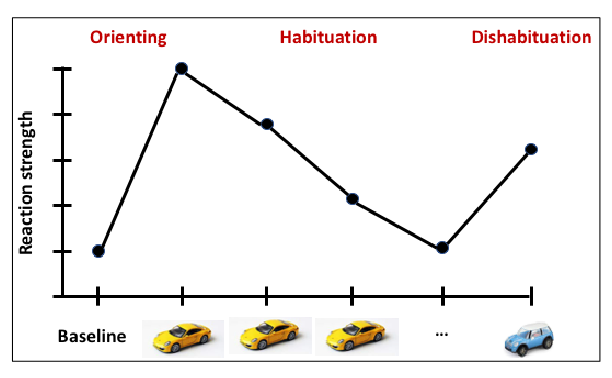
What are the 3 ways in which we can Measure a response by an infant? What is the assumption that comes with it?
Sucking preference
Head turn preference
Paired visual preference
Assumption:
Looking, sucking, turning head = Interested, surprising outcome, noticed a difference.
NOT looking, sucking, turning head = Loss of interest, recognized as old, did not notice a difference.
What is a Research challenge in Experimental aging research?
Age Stereotype Threat.
Same study material but different instructions: “The goal of the study is to assess your…”
Memory abilities: will allow to diagnose whether memory is normal.
Reading ability: will allow to assess if reading ability is normal
What are the 7 principles of Lifespan psychology?
Development is…
Lifelong
Multidimensional and Multidisciplinary
Multidirectional
Gains and losses
Plastic
Embedded in history
Contextualized
What does it mean when human development has to be seen in a multidisciplinary way?
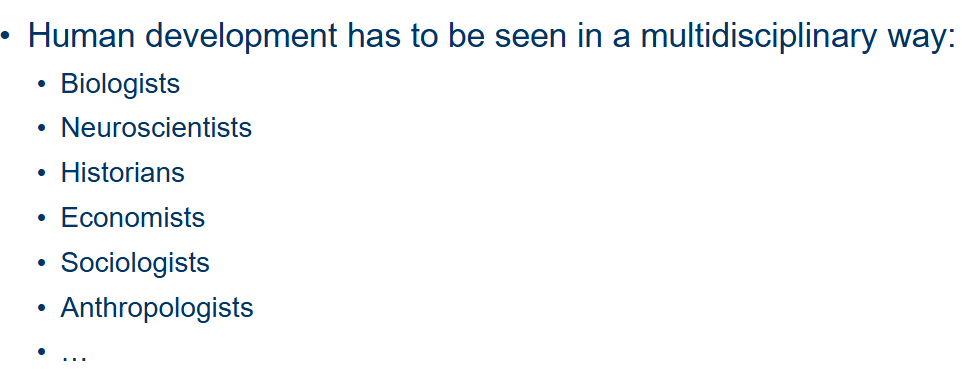
What is Multidirectionality in development?
Contrary to earlier assumptions, development is not a universal process leading in one direction (→ more “mature” functioning).
Different capacities show different patterns of change over time.
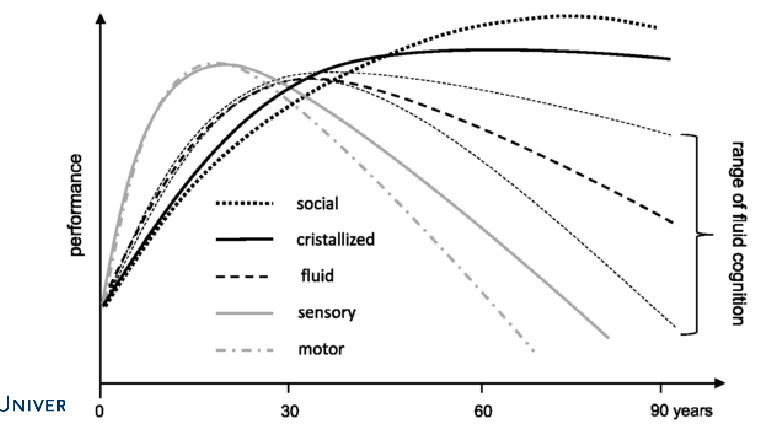
Multidirectional measures differences between individuals in […]. Name 4 things.
Different features begin to appear at different times.
Mature at different rates.
Begin to decline, if decline they do it at different times.
Decline at different rates.
There are large inter-individual differences in development.
No individual is the average!
What does the Gain-loss dynamic across the lifespan development entail?
Development always consists of the joint occurrence of gain (growth) and loss (decline).
Ex. Language recognition and language acquisition in childhood — loss in the context of specialization.
What does Plasticity and constraints tell about the development of an Individual?
Vulnerable individuals are most vulnerable in aversive environments, but may also benefit most in positive environments.
What does Historical embeddedness of development entail?
Course of age-related development strongly shaped by the prevailing socio-cultural conditions of a historical period → time-of-measurement and cohort effects.
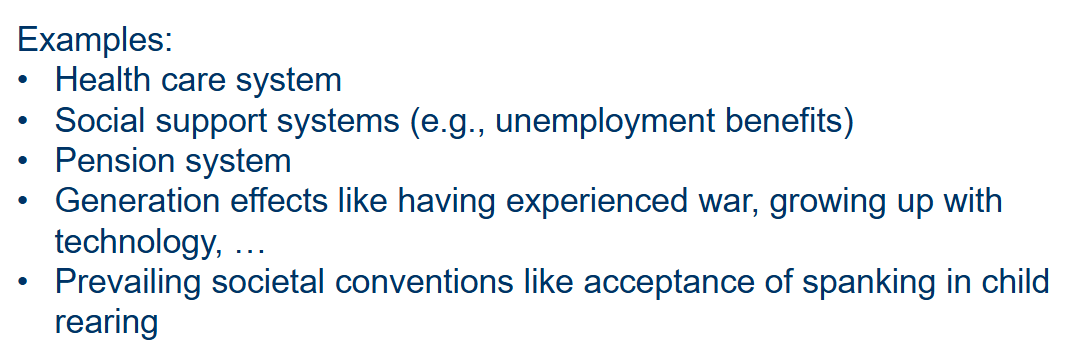
What are Contextual developmental influences?
